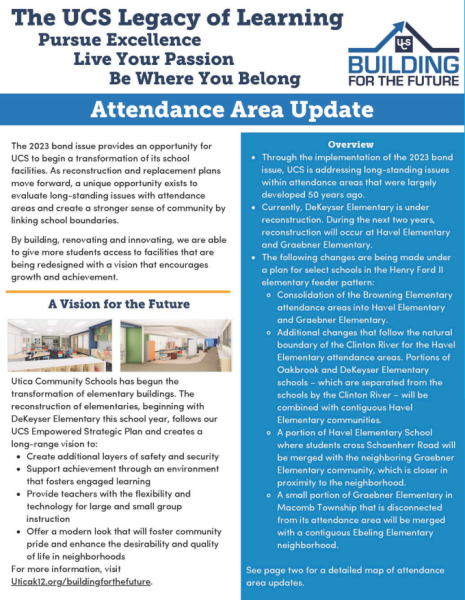Education reaches beyond classroom
Senior future educators student Katie Johnson reads a book to her young learners at Roberts Elementary School. “I really like working with the first grade, because it helps me decide my future plans and I always love, at the end of the class, when they all rush to do the ‘first grade stampede’ and hug me,” Johnson said.
A calm and peaceful atmosphere with amazing art on the walls. Walking around to learn, instead of sitting to listen. Outside curriculum inspires students in many ways.
“I think that giving students real-world experiences allows them to not only see what happens in the real world, but get a feel for maybe some of the jobs or professions or occupations that are involved out there that they can do,” counselor Dr. Julia Jones-Lau said.
Outside the classroom experiences during the school year included: medical health classes to Baker College, newspaper and yearbook to the Michigan Interscholastic Press Association fall conference in Lansing, AP European classes and art classes to the Detroit Institute of Arts Museum.
“I love looking at art,” senior art student Nicole Mahmood said. “I think it’s really cool and sometimes it inspires you for your own artwork.”
Inspired by technology and students from across the country, astronomy teacher Trapper Hallam’s students attended a technology showcase in Lansing.
“I think seeing the other side [of education], seeing some of the stuff that we do, maybe realizing some of the stuff that we do in school, is kind of neat and different,” Hallam said.
Certain class’s curriculum is based on outside learning, specifically future educators. This is a class where high school students work with elementary students, showing the future educators what teaching is really like. Twice a week, the 32 students travel to elementary schools and work with young learners.
“It helps them decide whether they want to go into the field of education or not,” future educators coordinator Margaret Mazuchowski said.
Co-op is another example of an outside learning experience that help teens decide on future fields. Students are at school for the first five hours and leave for a job which corresponds to a class they’re taking.
“It’s helpful in that it’s obviously outside the classroom,” co-op coordinator Catherine Lelito said. “It’s hands-on that you’re not going to get anywhere else.”
Students only pay attention 40 percent in a typical lecture, according to a Columbia University study. When they added visual aids, students focus went up 14-38 percent.
“Learning in different places helps students focus more,” senior co-op student Kelsey Griffin said. “It helps us into the topic we’re learning rather than sitting and listening.”
Your donation will support the student journalists of Eisenhower High School. Your contribution will allow us to purchase equipment and cover our annual website hosting costs.





![Bringing an idea to life, senior sculpture student Braden Williams begins construction on a book-based sculpture. The sculpture concept revolves around fortune telling, which Williams will evoke with a head sculpt, sporting a third eye. “It's [the eye] a bigger focus on that face. It's the main focus. Gotta put a lot of detail into that,” Williams said.](https://ikenews.com/wp-content/uploads/2025/04/IMG_3413-1-600x481.jpg)